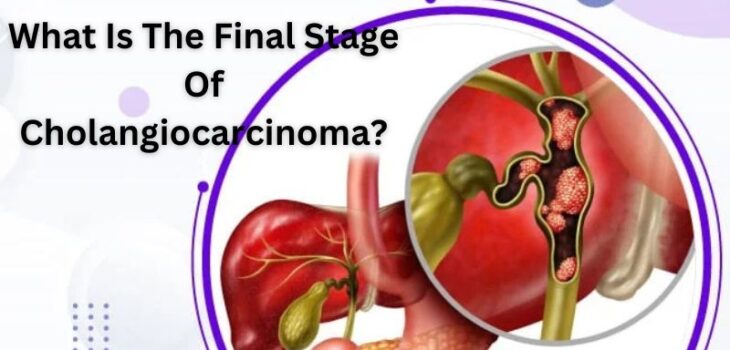 Health & Fitness
Health & Fitness
What Is The Final Stage Of Bile Duct Cancer (Cholangiocarcinoma)?
- by wiwov67
Cholangiocarcinoma, also known as bile duct cancer, is a rare and aggressive cancer that begins in the bile ducts, which are responsible for transporting bile from the liver to the small intestine. This form of cancer is notoriously challenging to diagnose in its early stages, as the symptoms often mimic other less serious conditions. The final stage of cholangiocarcinoma, or stage 4 bile duct cancer, represents the most advanced form of the disease, where the cancer has spread beyond the bile ducts to other organs, making treatment more difficult and outcomes less favorable.
Understanding the cholangiocarcinoma stages is crucial for patients, their families, and healthcare providers to navigate the complexities of this disease. In this article, we will delve into what the final stage of cholangiocarcinoma entails, its symptoms, and the challenges associated with stage 4 bile duct cancer.
Understanding Cholangiocarcinoma Stages
The progression of cholangiocarcinoma is categorized into several stages, which help to determine the extent of the cancer and the best course of treatment. These stages are as follows:
- Stage 1: In this early stage, the cancer is confined to the bile duct lining and has not spread to nearby tissues or organs. Surgery is often possible at this stage.
- Stage 2: At this stage, the tumor has grown deeper into the bile duct walls but has not yet spread to nearby lymph nodes or distant organs. Surgical removal might still be an option.
- Stage 3: This is a locally advanced stage where the cancer has spread to surrounding structures, such as nearby blood vessels, liver, or lymph nodes, but not to distant parts of the body.
- Stage 4: Stage 4 bile duct cancer is the final and most advanced stage. At this point, the cancer has spread beyond the bile ducts to distant organs, such as the liver, lungs, or bones. Treatment options become more limited, and the prognosis is generally poor.
What Happens in Stage 4 Cholangiocarcinoma?
In stage 4 cholangiocarcinoma, the cancer has metastasized to other parts of the body. This means that the cancer cells have spread from the bile ducts to distant organs, making it more difficult to treat effectively. Stage 4 is often considered the final stage, and it is associated with the most severe symptoms and complications.
The spread of cancer in stage 4 bile duct cancer often affects critical organs such as the liver, which can cause further liver dysfunction, or the lungs, which may impair breathing. In some cases, the cancer may also spread to the bones, leading to skeletal pain and fractures.
Stage 4 Bile Duct Cancer Symptoms
The symptoms of stage 4 bile duct cancer vary depending on where the cancer has spread. However, several general signs and symptoms can indicate that the cancer has reached an advanced stage. Some of the most common symptoms include:
- Jaundice: One of the hallmark symptoms of cholangiocarcinoma at any stage is jaundice, which causes the skin and the whites of the eyes to turn yellow. In stage 4, jaundice may worsen as the bile duct becomes obstructed due to the cancer’s growth or metastasis.
- Abdominal Pain: As the cancer spreads to nearby organs, particularly the liver or intestines, patients may experience significant abdominal pain. This pain may be dull or sharp and can be localized or widespread.
- Weight Loss: Unexplained weight loss is a common symptom of stage 4 cholangiocarcinoma. As the cancer grows and spreads, it may interfere with the body’s ability to absorb nutrients and maintain a healthy weight.
- Fatigue: Patients with stage 4 bile duct cancer often report extreme fatigue and weakness. This is due to both the cancer’s impact on the body and the side effects of treatment.
- Nausea and Vomiting: As the cancer spreads, patients may experience digestive issues such as nausea, vomiting, and loss of appetite. This can be exacerbated by liver dysfunction, as the liver plays a key role in digestion.
- Itchy Skin: When the bile ducts are blocked, bile salts can build up in the skin, causing intense itching. This is particularly common in advanced stages of cholangiocarcinoma.
- Ascites: This refers to the accumulation of fluid in the abdominal cavity, which can cause swelling and discomfort. Ascites is often a sign of advanced liver disease or cancer.
- Liver Failure: Since cholangiocarcinoma frequently spreads to the liver, stage 4 patients may experience signs of liver failure, such as confusion, bleeding, and a buildup of toxins in the blood.
Treatment Options for Stage 4 Cholangiocarcinoma
Unfortunately, the prognosis for stage 4 bile duct cancer is generally poor due to the advanced nature of the disease. At this stage, treatment is focused on managing symptoms and improving quality of life rather than curative interventions. Treatment options may include:
- Chemotherapy: Chemotherapy drugs are used to kill cancer cells or stop them from growing. However, chemotherapy in stage 4 is often not curative and is aimed at slowing the cancer’s progression.
- Targeted Therapy: This approach targets specific molecules involved in cancer cell growth. Targeted therapies may offer some benefit, depending on the genetic mutations present in the cancer cells.
- Radiation Therapy: In some cases, radiation may be used to shrink tumors and alleviate pain or other symptoms. Radiation can also be used to treat metastases to other organs.
- Palliative Care: Palliative care focuses on relieving symptoms and improving the patient’s quality of life. This may involve pain management, nutritional support, and assistance with other issues related to the cancer’s impact on daily life.
- Liver Transplant: In rare cases where cholangiocarcinoma has spread to the liver but not beyond, a liver transplant may be considered, though this is highly specific to individual cases.
Conclusion
The final stage of cholangiocarcinoma, or stage 4 bile duct cancer, is a challenging and advanced phase of the disease where the cancer has spread to distant organs, making treatment more difficult. Patients with stage 4 cholangiocarcinoma experience a range of symptoms, including jaundice, abdominal pain, weight loss, and fatigue. While the prognosis at this stage is generally poor, various treatment options, including chemotherapy, targeted therapy, and palliative care, are available to help manage symptoms and improve quality of life. Understanding the cholangiocarcinoma stages and recognizing the symptoms of stage 4 bile duct cancer can help patients and their families make informed decisions about care and treatment.
for more(click here)









